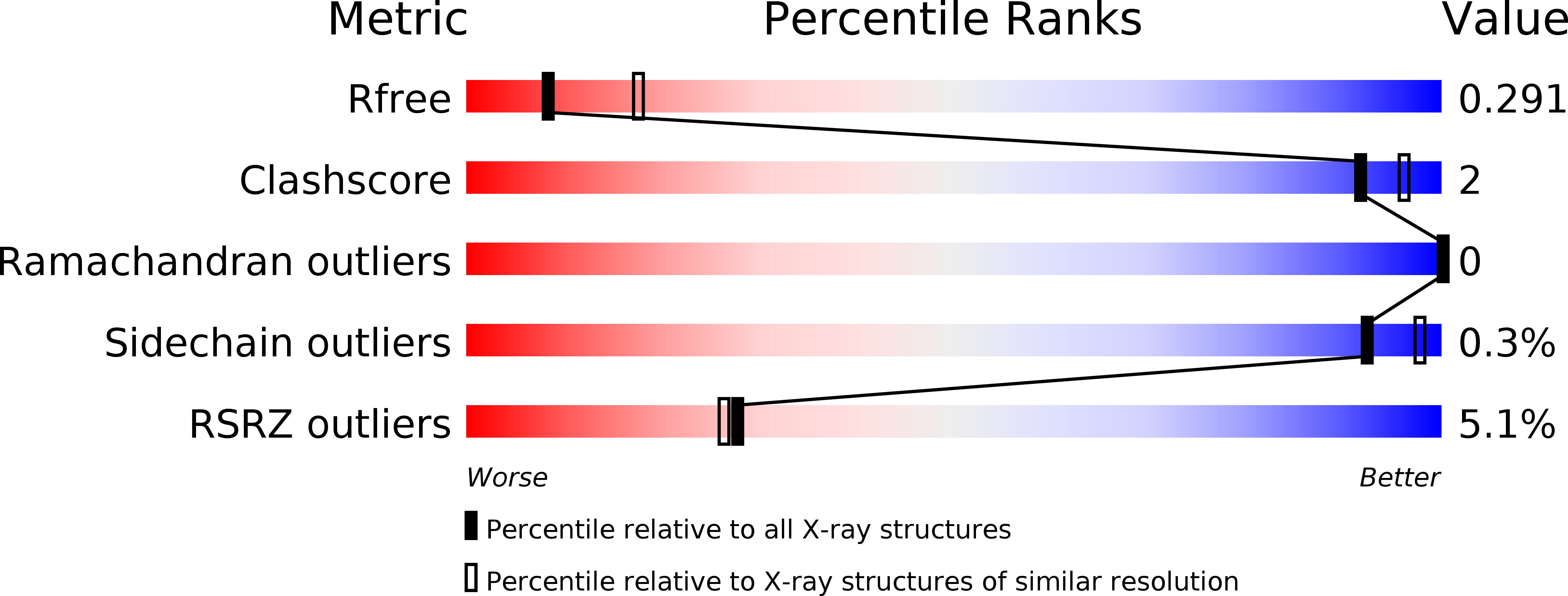
Deposition Date
2013-06-28
Release Date
2014-01-29
Last Version Date
2023-12-20
Entry Detail
PDB ID:
4BVU
Keywords:
Title:
Structure of Shigella effector OspG in complex with host UbcH5c- Ubiquitin conjugate
Biological Source:
Source Organism:
SHIGELLA FLEXNERI (Taxon ID: 623)
HOMO SAPIENS (Taxon ID: 9606)
HOMO SAPIENS (Taxon ID: 9606)
Host Organism:
Method Details:
Experimental Method:
Resolution:
2.70 Å
R-Value Free:
0.29
R-Value Work:
0.24
R-Value Observed:
0.24
Space Group:
P 63 2 2


